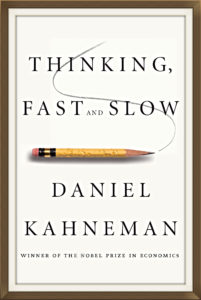Jul 19 2018
Developing Cognitive Biases in Young Children
 I have discussed a number of cognitive biases over the years, based mostly on research in adults. For example, Kahneman and Tversky first proposed the representativeness heuristic in 1973. But at what age do children start using this heuristic?
I have discussed a number of cognitive biases over the years, based mostly on research in adults. For example, Kahneman and Tversky first proposed the representativeness heuristic in 1973. But at what age do children start using this heuristic?
A heuristic is essentially a mental short cut. Such short cuts are efficient, and decrease our cognitive load, but they are imperfect and prone to error. In the representativeness heuristic we rely on social information and ignore numerical information when making probability judgments about people.
In the classic experiment subjects were given a description of the personality of a student, designed to be a stereotype of an engineer. They were then asked how likely it was that the student was an engineering student. Many subjects answered that the student was likely an engineering student, without considering the base rate – the percentage of students who are in engineering. Even when given that information showing it was unlikely the student was an engineer, many subjects ignored the numerical information and based their judgments entirely on the social information.
This can also be seen in the context of general cognitive styles – intuitive vs analytical (or thinking fast vs thinking slow – as in the title of Kahneman’s book). Intuitive thinking is our gut reaction, it is quick and relies heavily on social cues and pattern recognition. It is therefore fast, but is also error prone and subject to a host of cognitive biases.
Analytical thinking is slow – it considers all available information in a formal way. It is therefore less error prone, but is slow and work intensive. Relying entirely on analytical thinking will likely reduce cognitive error, but might make it difficult to get through your life.
So what cognitive style should you employ? That is a question for metacognition – or thinking about thinking. Briefly, an optimal balance of the two styles should be employed in a flexible way depending on context. How tolerant is the situation of slowness or error?
You can also improve your thinking in a number of ways. You can, for example, be aware of common cognitive biases so that when you are employing intuitive thinking, you can try to filter out the biases. You can also learn about and practice analytical thinking, so that it becomes quicker and more efficient (as well as more accurate and thorough). Thinking is a skill, and you can develop that skill through training and practice (like any skill).
The question for the current study is this – how does cognitive style with respect specifically to the representativeness heuristic change as young children age? The researchers first established that children as young as 3 years old can use base rate information when making judgements. They also established that children as young as 4 years old can use “individuating information” (such as personality type) in making judgments.
They tests children between 4 and 6 with tasks similar to the original representativeness studies. They found that 6 year olds relied more heavily on individuating information than 5 year olds, who in turn relied more heavily than 4 year olds. This was true even when the individuating information was irrelevant. Six year olds relied on the representativeness heuristic at about adult levels.
So essentially they found that reliance on the representativeness heuristic (relying on social information while ignoring mathematical information) begins at 4 years old and increases until it reaches adult levels at 6 years old.
This research is consistent with prior research indicating that children are developing their basic intuitions at this age (between 4 and 7). So again, this is part of a more general phenomenon. But also at the same time children are developing more sophisticated thinking strategies, and are replacing magical thinking with more logical thinking. It is a time of tremendous cognitive development.
While more research is needed, the research suggests that cognitive biases develop at a young age. To me that means that we should be teaching metacognition at the same time. Even in kindergarten, at 5 years old, it would be helpful to start introducing real teaching in critical thinking. Teach kids to recognize and think about cognitive biases right when they are first developing and using them.
The longer you wait, it seems likely, the more ingrained the cognitive biases will become. Habits of thought can be hard to break, so you might as well encourage good habits right from the beginning.






